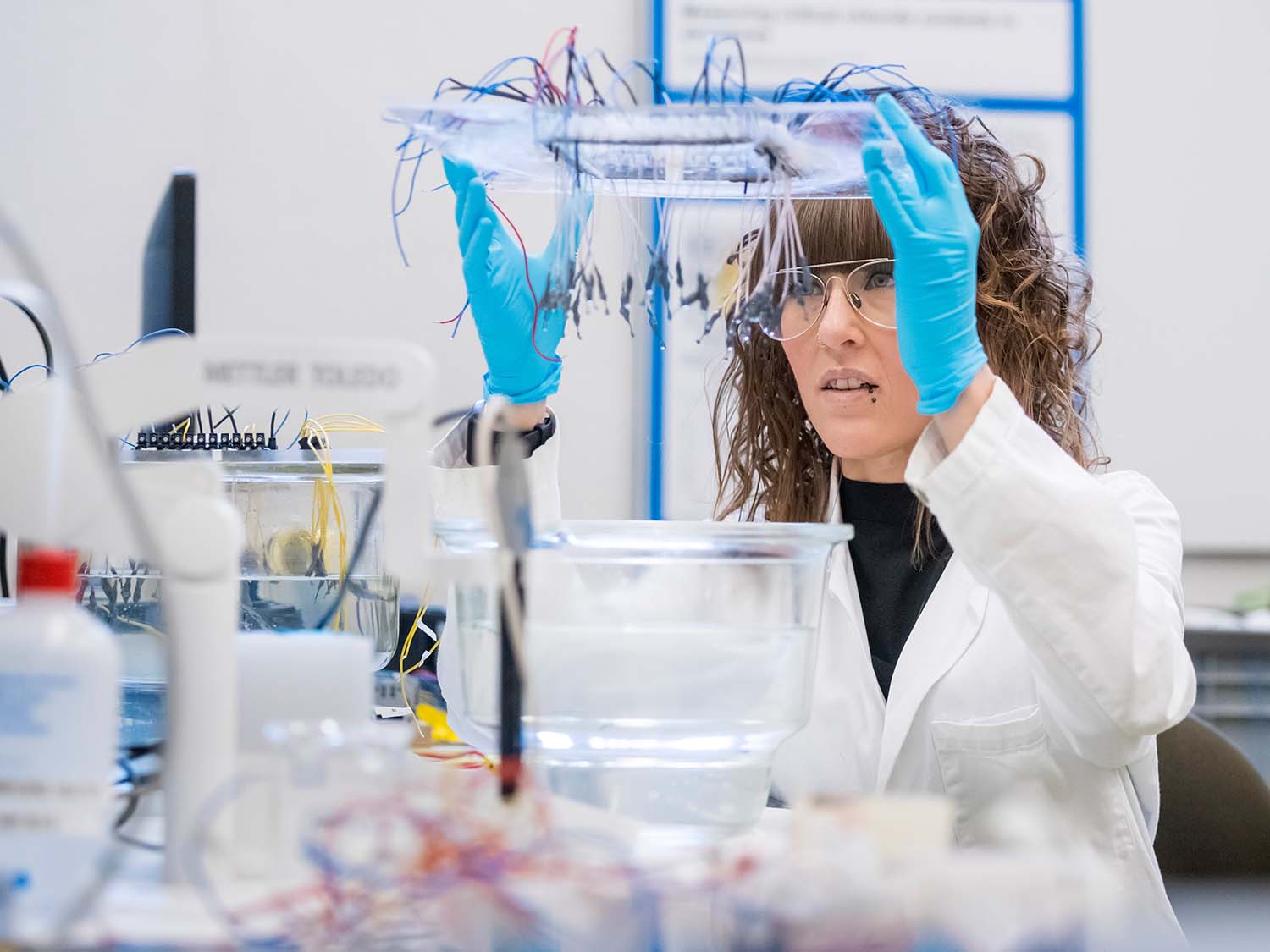Steel-reinforced concrete is the building material used most throughout the world. But the steel inside is corroded by chloride seepage, for example from seawater and deicing salt, and by CO2 from the atmosphere.

“Corrosion is a slow process which, most of the time, cannot be easily detected because it takes place within the concrete,” says Dr Yurena Seguí Femenias. “When it’s discovered, it’s often too late.” Undetected corrosion damage was probably one of the causes that contributed to the collapse of the motorway bridge in Genoa last summer.
In Switzerland, a lot of concrete structures were built in the 1970s and are nearing a critical age. Checking for corrosion in concrete is very expensive, explains the construction engineer. In Switzerland building repairs are usually very conservative. “That costs a lot of money and harms the environment because the production of concrete is very CO2 intensive. What’s more, renovation work reduces the availability of an infrastructure for its users.”
Supported by BRIDGE’s “Proof of Concept” funding, Seguí Femenias is working to develop a sensor system. Sensors embedded in the concrete, in association with an algorithm, monitor the chloride concentration and pH level (a rising CO2 concentration drives the pH level down). This makes it possible to forecast when damage to the steel reinforcing rods in the concrete will begin. Depending on the rising risk of corrosion, it will be time to react – not too late but also not too soon.
Last modification 27.06.2022





